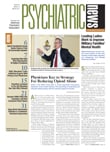The National Institute on Drug Abuse (NIDA) wants primary care clinicians to be just a phone call or an e-mail away from expert advice and support when managing patients with substance abuse problems.
In April the Physician Clinical Support System for Primary Care (PCSS-P) began connecting primary care physicians with online information and resources, as well as experienced mentors for more specific advice about screening, intervening, treating, or referring patients who abuse drugs or alcohol. A NIDA grant funds the project, which is administered by the American Society of Addiction Medicine.
The PCSS-P service is a "warmline" system. It provides a response within 24 hours—but not immediately as with a true hotline.
When primary care clinicians need help in managing an individual patient, they can call PCSS-P. That begins a triage process that routes calls or e-mails to one of seven clinical advisors (called mentors) or to one of the two medical directors—David Fiellin, M.D., a professor of medicine and public health at Yale University, and Louis Baxter Sr., M.D., president of the American Society of Addiction Medicine and medical director of New Jersey's professional assistance program.
Each mentor's specialty or practice experience can be matched as closely as possible with the caller's background and inquiry, said Fiellin in an interview with Psychiatric News.
"We have mentors who are specialists in family medicine, internal medicine, emergency medicine, as well as some who work in federally qualified health centers," said Fiellin. "We wanted mentors who had broad training in addiction medicine and were also good teachers who could work with primary care doctors with varying knowledge of the subject."
Each mentor can advise 50 to 100 primary care physicians, he said. The highest use for each primary care doctor who accesses the system will likely occur in the first two or three weeks after that physician's first contact, but should become less intense as he or she gains knowledge and experience, Fiellin noted.
How well the system will work may depend on the preferences of individual practitioners and patients, said Virginia Hood, M.B.B.S., M.P.H., a professor of medicine at the University of Vermont and president of the American College of Physicians.
"The issue of substance abuse is a large and serious problem for our patients, so any initiative is always welcome," said Hood in an interview. "We support efforts to help educate our members to recognize, treat, and counsel patients about alcohol and drug abuse."
The PCSS-P represents a good first step, although many primary care clinicians could use an immediate consultation at the point of care to help them start some type of intervention before the patient leaves the office, said Hood, who is not connected with PCSS-P.
Much of the clinicians' education will come not only from direct contact with the PCSS-P experts but from the project's Web site, which provides links to resource material for physicians and patients. This information includes a brief initial screening tool produced by NIDA that can be completed either by the patient, the physician, or a staff person. If that indicates actual or potential abuse of drugs or alcohol, a more detailed screening tool is available to define the nature and severity of the patient's problem.
"We hope to get feedback from participating primary care physicians about the value of these resources and use that information to make the NIDA and PCSS-P Web sites more user friendly," said Fiellin.
The PCSS-P system is a modified version of similar programs that provide specialized expertise to help primary care physicians who are using methadone and buprenorphine treatments in their practices. Many of those physicians had taken required courses in the use of these medications, but needed additional advice when confronted with real-world problems that arose in the course of their practice, said Fiellin.
A study of the buprenorphine project published online on May 11, 2010, in the Journal of General Internal Medicine reported that from July 2005 to July 2009, 632 primary care participants in 48 states had 1,455 contacts with 67 mentors and four other clinical experts.
